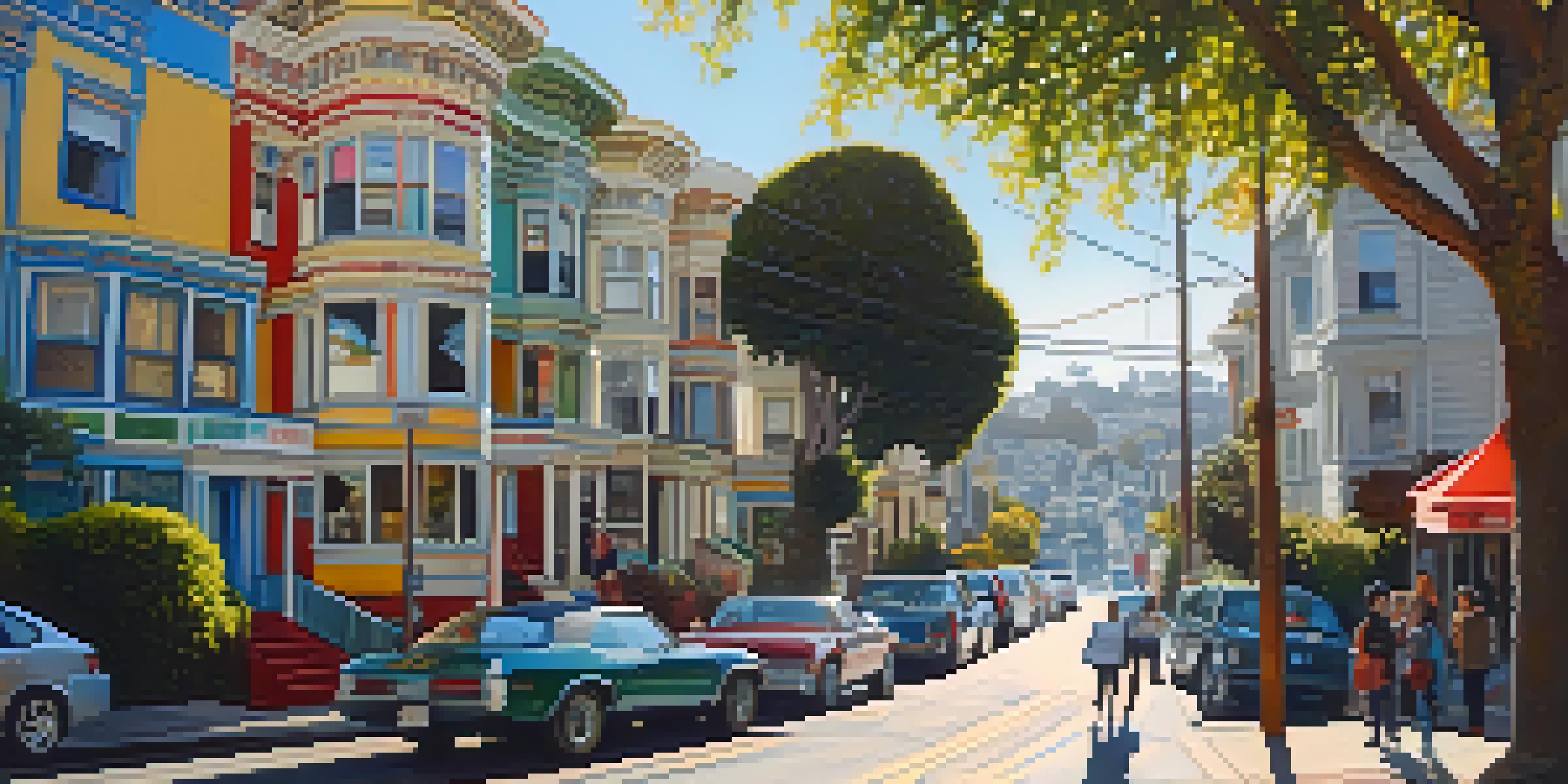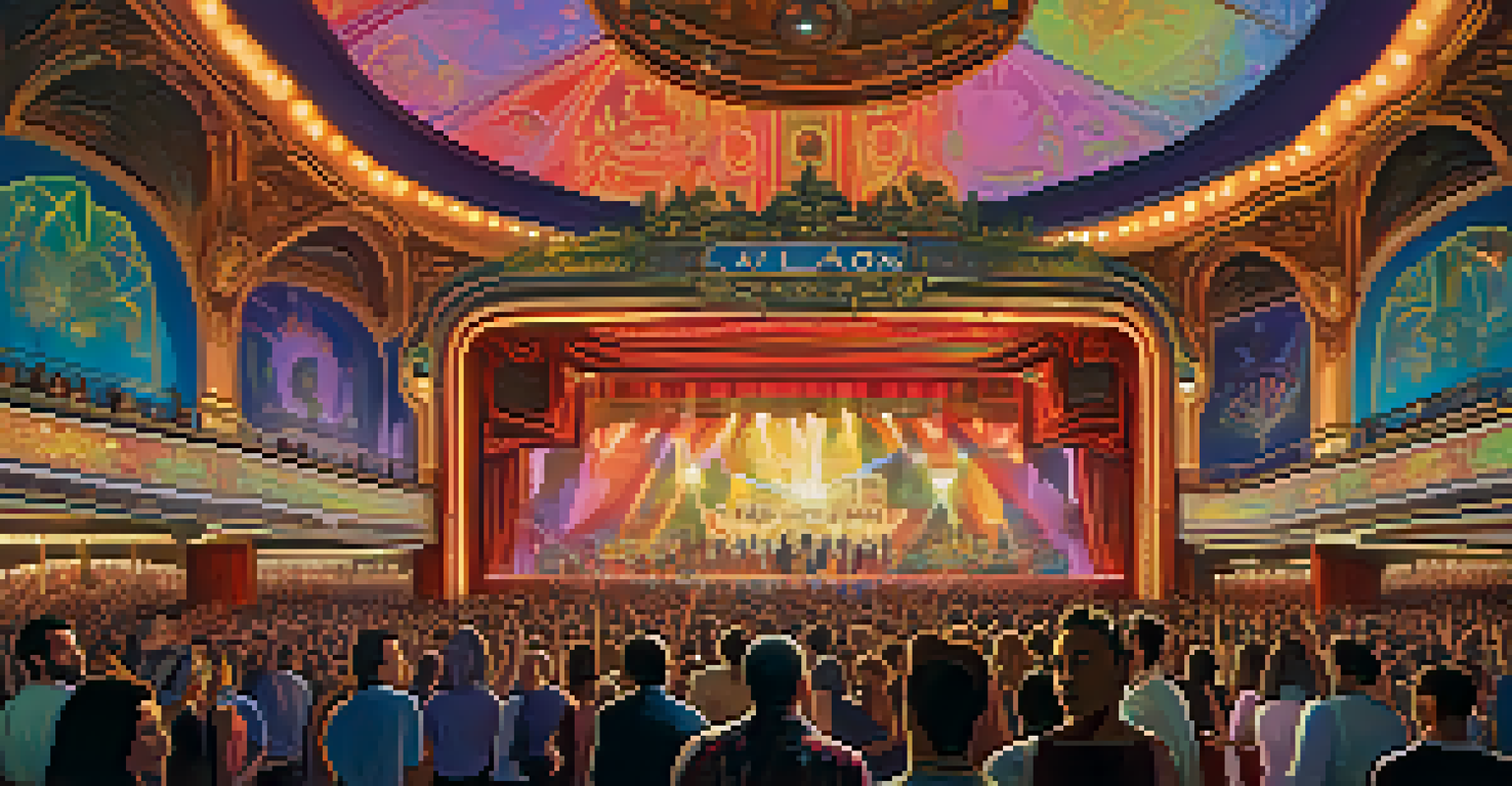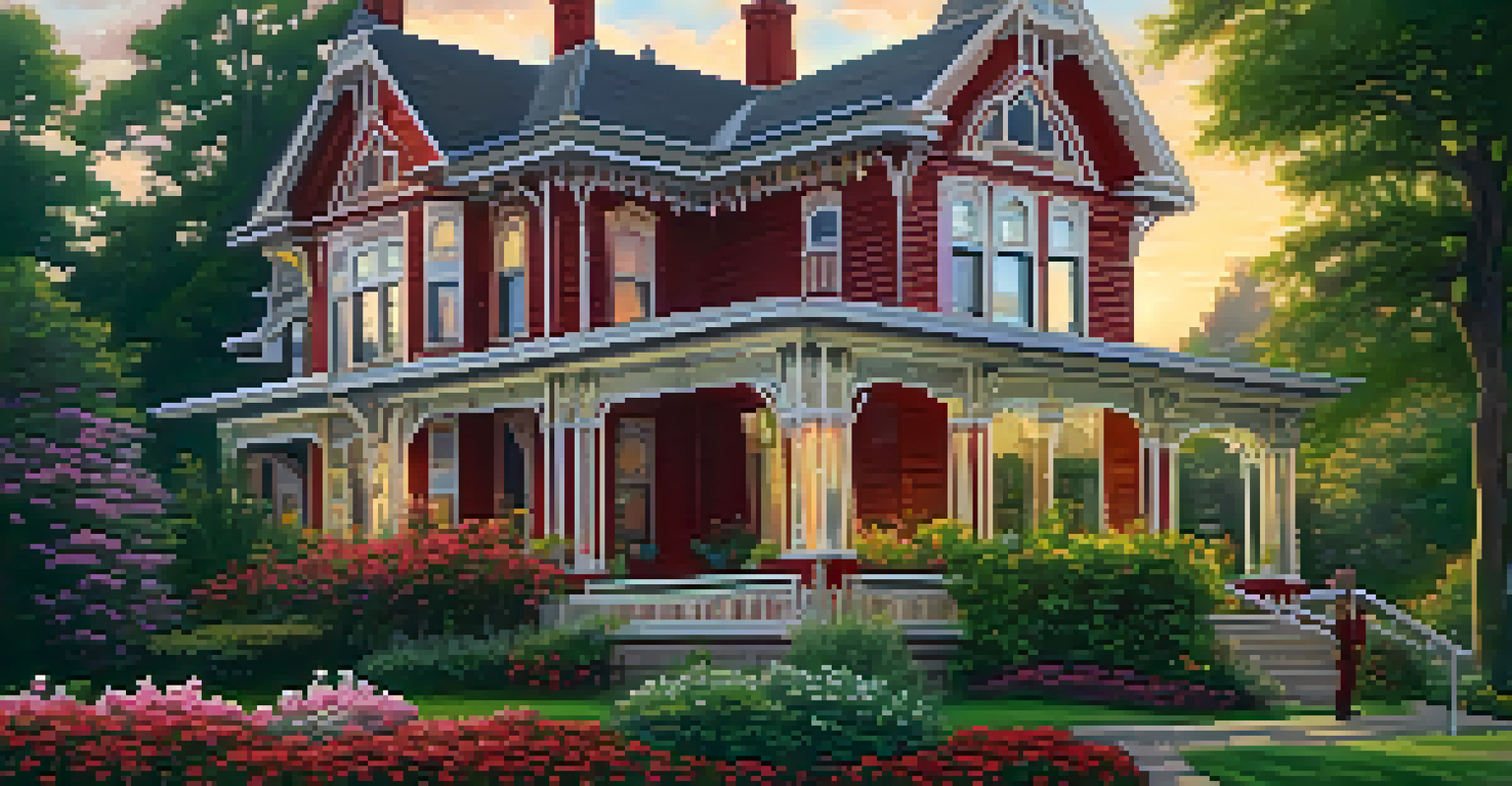The Haight-Ashbury District: A Cultural Arts Revolution

The Origins of Haight-Ashbury: A Bohemian Hub
Haight-Ashbury, nestled in San Francisco, became a cultural hotspot in the 1960s. Known for its laid-back vibe and artistic spirit, it drew artists, musicians, and free thinkers. The neighborhood's roots can be traced back to the bohemian movement, which sought to break free from traditional norms and embrace creativity.
The only way to deal with the future is to function efficiently in the now.
As the beat generation paved the way in the 1950s, Haight-Ashbury blossomed into a sanctuary for those seeking an alternative lifestyle. The area's Victorian houses and eclectic shops provided the perfect backdrop for a community that valued artistic expression and social revolution. This eclectic mix set the stage for the iconic Summer of Love in 1967.
Throughout its early years, Haight-Ashbury attracted a diverse crowd, united by a common goal: to create a more peaceful and loving world. This neighborhood became a melting pot of ideas, where art, music, and social change intertwined, leaving a lasting legacy that shaped not only San Francisco but the entire nation.
The Summer of Love: A Cultural Explosion
The Summer of Love in 1967 marked a pivotal moment for Haight-Ashbury, as thousands flocked to the district. This gathering symbolized a counterculture movement that embraced peace, love, and music, offering a stark contrast to the tumultuous social climate of the time. Events like the Human Be-In attracted attention, showcasing artists and musicians who would later become legends.

Musicians such as The Grateful Dead and Janis Joplin played in local venues, establishing a unique sound that resonated with the youth. This era fostered a sense of community where art served as a vehicle for social change, and the Haight became synonymous with the flower power movement. The vibrant murals and street art reflected the ideals of love and unity.
Cultural Hotspot of the 1960s
Haight-Ashbury emerged as a vibrant center for artistic expression and counterculture, attracting a diverse community seeking peace and love.
However, as the crowds grew, so did the challenges. The influx of visitors led to a strain on local resources, and the idealistic vision began to clash with the realities of urban life. Despite these challenges, the Summer of Love solidified Haight-Ashbury's status as a cultural epicenter and laid the groundwork for future artistic movements.
Artistic Expression: A Canvas of Change
Haight-Ashbury served as a canvas for artistic expression, where creativity flourished in various forms. From vibrant murals covering buildings to street performances, the district became a haven for artists seeking to share their messages. This explosion of creativity not only beautified the area but also sparked conversations about social issues, identity, and freedom.
Art is the most beautiful of all lies.
Local galleries showcased the works of emerging artists, often focusing on themes of peace, love, and rebellion. This artistic outpouring was fueled by the belief that art could challenge the status quo and inspire change. Many artists found their voices in the Haight, contributing to a cultural landscape that encouraged experimentation and collaboration.
Moreover, the district's iconic music scene played a crucial role in shaping its identity. Live performances became a staple, bringing together diverse audiences who shared a passion for artistic exploration. The synergy between visual art and music created an environment where both could thrive, leaving behind a legacy that continues to inspire artists today.
The Legacy of Haight-Ashbury: Influence on Culture
The influence of Haight-Ashbury extends far beyond its geographical boundaries. The ideals of the counterculture movement resonated with generations, inspiring social movements and artistic expressions worldwide. Concepts such as environmentalism, LGBTQ+ rights, and anti-war sentiments found their roots in the discussions that emerged from this vibrant community.
As the years passed, the Haight evolved, but its spirit remained intact. The neighborhood became a symbol of resistance against conformity, encouraging individuals to embrace their true selves. Today, it stands as a testament to the power of community and creativity, reminding us that art and culture can drive social change.
Legacy of Artistic Revolution
The neighborhood's influence on social movements and artistic expression continues to inspire generations, highlighting the power of creativity.
Visitors to Haight-Ashbury can still feel the echoes of its revolutionary past. From the iconic Red Victorian bed and breakfast to the historic Avalon Ballroom, the area continues to attract those seeking to explore its rich cultural heritage. The legacy of Haight-Ashbury serves as a reminder that the quest for peace, love, and artistic expression is a journey worth pursuing.
Modern Haight-Ashbury: Balancing Preservation and Progress
Today, Haight-Ashbury is a blend of its historic roots and modern influences. While the neighborhood retains its bohemian charm, it faces the challenges of gentrification and commercialization. Local businesses strive to maintain the spirit of the 1960s, offering unique shops, cafes, and art spaces that reflect the community's artistic legacy.
Efforts to preserve the neighborhood's history are evident in initiatives aimed at honoring its past while adapting to contemporary needs. Community organizations work to protect local artists and support cultural events that celebrate Haight-Ashbury's rich history. This balance between preservation and progress is vital for maintaining the district's identity.
Moreover, the ongoing dialogue about social justice and inclusivity remains an integral part of Haight-Ashbury's narrative. The community continues to advocate for diversity and equality, drawing inspiration from its past while striving for a better future. This commitment to social progress ensures that Haight-Ashbury remains a vibrant hub for creativity and activism.
Events and Festivals: Celebrating Cultural Heritage
Haight-Ashbury is home to various events and festivals that celebrate its unique cultural heritage. These gatherings provide a platform for local artists, musicians, and performers to showcase their talents while bringing the community together. Events like the Haight-Ashbury Street Fair highlight the neighborhood's artistic spirit and foster a sense of unity among residents and visitors alike.
The annual celebration often features live music, art installations, and food vendors, creating an immersive experience that reflects the district's vibrant history. These festivals not only honor Haight's past but also promote the ongoing creativity and innovation that define the area today. It's a chance for people to connect, share stories, and appreciate the rich tapestry of culture.
Modern Challenges and Preservation
Today, Haight-Ashbury balances its historical charm with the pressures of gentrification while advocating for social justice and cultural heritage.
Additionally, these events serve as a reminder of the power of community engagement in preserving cultural heritage. By celebrating their history, residents and visitors contribute to the ongoing narrative of Haight-Ashbury as a place of artistic revolution. In doing so, they ensure that the spirit of creativity and social change continues to thrive.
Visiting Haight-Ashbury: A Journey Through Time
Visiting Haight-Ashbury is like taking a trip back in time, where the echoes of the past still resonate in the streets. Tourists can stroll down Haight Street, exploring vintage shops, record stores, and cafes that have become landmarks of the counterculture movement. Each corner tells a story, inviting visitors to immerse themselves in the rich history of the district.
As you explore, don't miss the iconic landmarks, such as the Red Victorian or the former home of the Grateful Dead. These sites serve as reminders of the artistic revolution that unfolded in this neighborhood. Many visitors enjoy taking guided tours that delve into the history of Haight-Ashbury, providing insights into its significance in American culture.

Ultimately, a visit to Haight-Ashbury is not just about seeing the sights; it's about experiencing the energy of a place that has long championed creativity and social change. Whether you're an art enthusiast, a music lover, or simply curious about its history, Haight-Ashbury offers a vibrant tapestry of culture waiting to be explored.